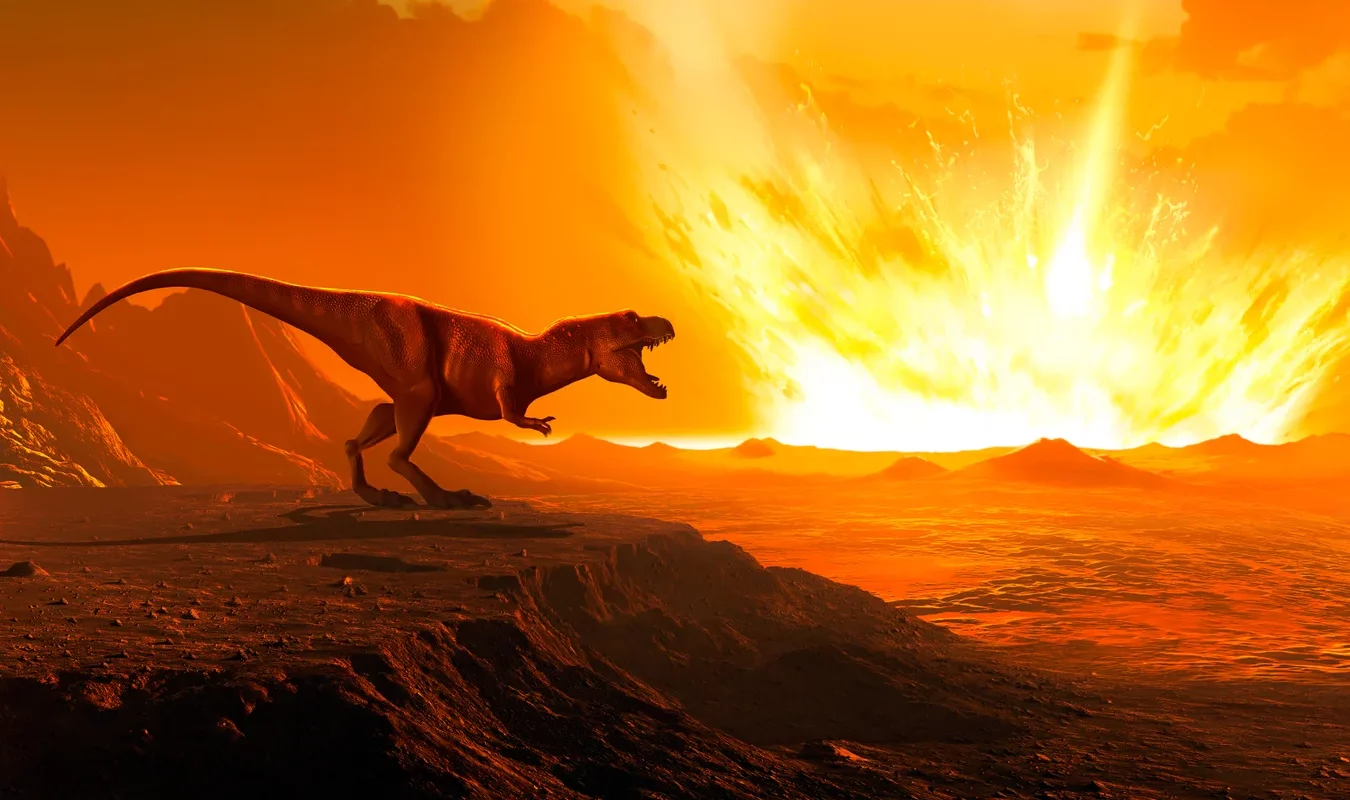About 66 million years ago, the Chicxulub impactor struck Mexico’s Yucatan Peninsula, bringing an end to the age of dinosaurs .
To this day, it remains unclear where this meteorite came from.
However, research from the University of Cologne in Germany has now confirmed that the Chicxulub impactor was an asteroid formed outside Jupiter’s orbit .
This is an extremely unusual occurrence, as most meteorites that hit Earth originate from the asteroid belt that stretches between Mars and Jupiter .
Where did the Chicxulub impactor come from?
The Chicxulub impactor fell to Earth at the end of the Cretaceous period , about 66 million years ago .
A whopping 75% of plant and animal species, including the dinosaurs that ruled the Earth at that time , were driven to extinction.
The first clues about the Chicxulub impactor came in the late 1970s.
A research team discovered high concentrations of iridium in rocks from the end of the Cretaceous period.
Iridium is very rare in rocks on Earth, but it’s a fairly common element found in asteroids floating in space .
This discovery gave impetus to the theory that the age of dinosaurs ended due to a meteorite impact.
Subsequent investigations revealed a huge crater measuring 160 kilometers in diameter on the Yucatan Peninsula, confirming the meteorite theory.
However, scientists have not been able to determine where the Chicxulub impactor came from .
So far, scientists generally agree that it’s an asteroid from somewhere in our solar system.
In particular , it has been thought that they may have originated from the asteroid belt that stretches between Mars and Jupiter .
The majority of asteroids that hit Earth are known to come from this asteroid belt.
In 2021, Harvard University (HU) in the United States proposed the theory that the Chicxulub impactor may not be an asteroid, but rather a comet ( Scientific Reports, 2021) .
According to this theory, a comet in the Oort Cloud, which circles the outer solar system , was pulled by Jupiter’s powerful gravity and launched towards Earth “like a pinball machine.”
(* The Oort Cloud is a theoretical group of celestial bodies that is believed to extend beyond the solar system and is thought to be a spherical shell of one trillion pieces of ice.
The distance from the Sun to the Oort Cloud is estimated to be at least 2000 times greater than the distance from the Sun to the Earth.
However, this remains at the hypothesis stage and is merely speculation.
The research team therefore decided to clarify the origin of the Chicxulub impactor by examining chemical traces found in strata from the end of the Cretaceous period, approximately 66 million years ago.
The meteorite came from “outside Jupiter’s orbit”!
This time, the team focused on an element called ruthenium .
Ruthenium, like iridium, is very rare in Earth rocks but much more common in asteroids .
In addition, by measuring ruthenium isotopes* , it is possible to roughly identify the type of asteroid.
(*An isotope is an element with the same atomic number but with a different number of neutrons. For example, carbon exists in nature in three isotopes: carbon-12, carbon-13, and carbon-14.)
The team collected rock samples from strata around the world dating to the time of the Chicxulub impactor.
The team is also examining rock samples from five other asteroid impacts that occurred over the past 541 million years.
Data analysis determined that all meteorites that have struck Earth in the past 500 million years are ” S-type asteroids . ”
S-type asteroids are rocks that contain a lot of silicates and are mainly found in the asteroid belt between Mars and Jupiter .
However, the Chicxulub impactor was an exception.
Examination of ruthenium isotopes revealed that the Chicxulub impactor was a type of meteorite called a “carbonaceous chondrite (C-type chondrite).”
Carbonaceous chondrites are known , in principle, to be meteorites formed outside the orbit of Jupiter .
Carbonaceous chondrites contain many volatile substances and minerals containing water, and therefore retain a lot of information about the early formation of the solar system.
It is believed that the low temperatures outside Jupiter’s orbit make it easy for volatile substances to condense, making this an ideal environment for the formation of carbonaceous chondrites.
Furthermore, the proportion of carbonaceous chondrites among all meteorites discovered on Earth in the past is extremely small, with only a few dozen examples known.
These results make it clear that the Chicxulub impactor that ended the age of the dinosaurs originated from outside Jupiter.
But how did such a distant asteroid travel towards Earth?
The current theory is that it was deflected from its orbit by a collision with another asteroid, and then captured by Jupiter’s gravity, sending it hurtling towards Earth.
However, these questions, including the exact location where the Chicxulub impactor formed, have yet to be answered.
The team hopes that further chemical analysis of the rock samples will help solve the mystery.
However, what bad luck would it be for an asteroid coming from farther away than Jupiter to hit the Earth with pinpoint accuracy?
In fact, considering that the meteorite impact ended the age of dinosaurs and began the age of mammals, it could be said that the fall of the Chicxulub impactor was necessary for the rise of humans.
If the orbit of the Chicxulub impactor had been just a little different, humans might not have been born.

